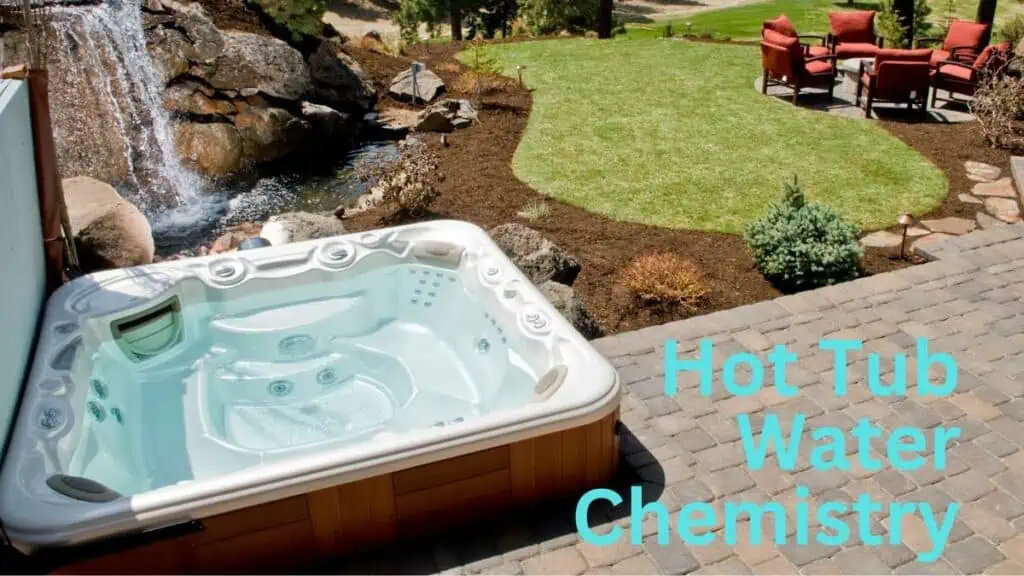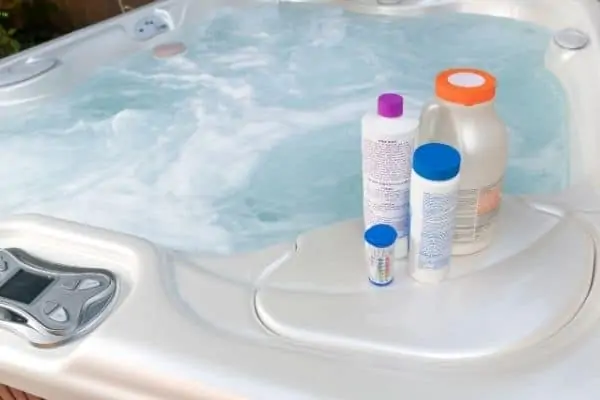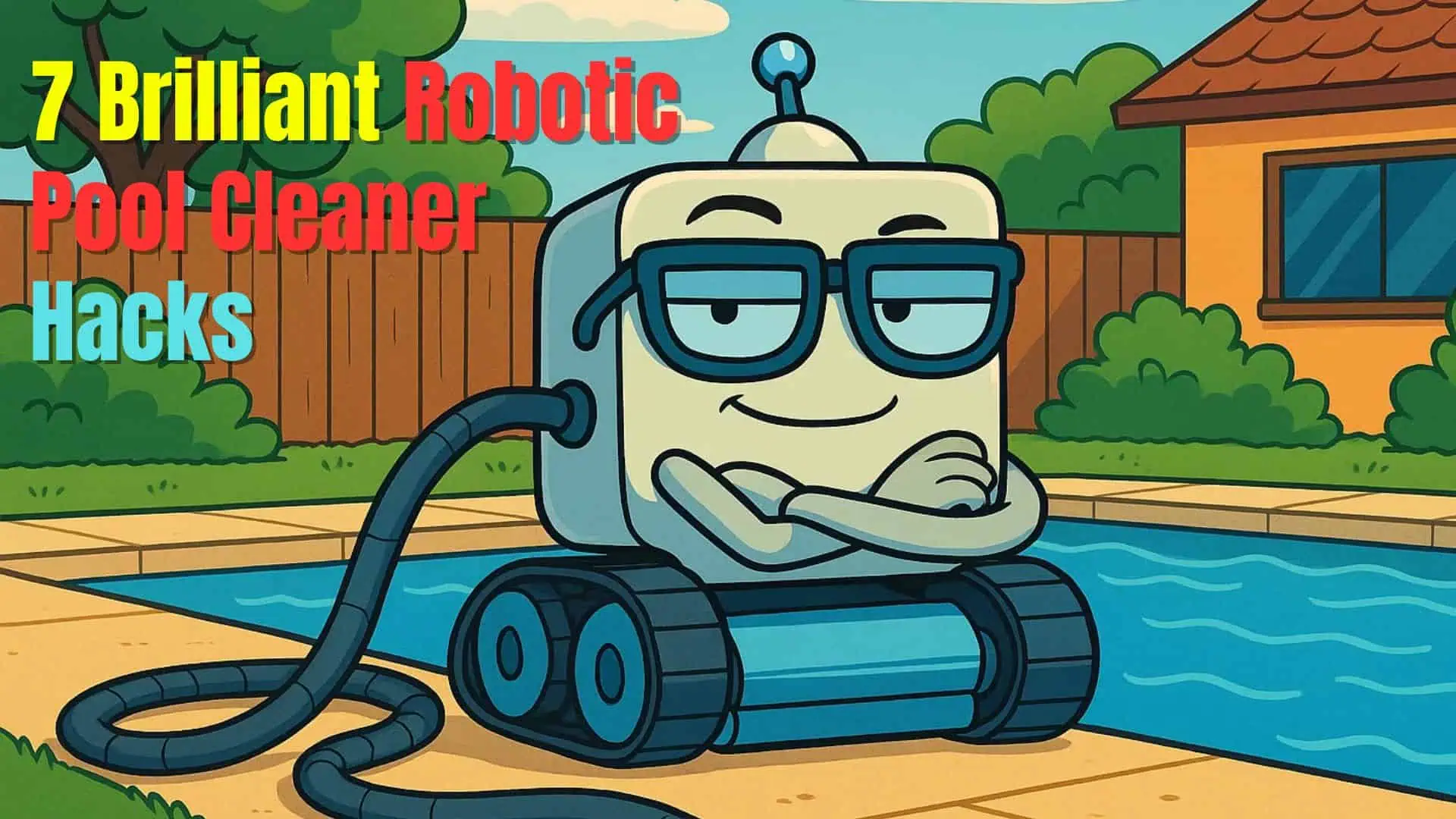Beyond the soothing bubbles and relaxing ambiance, there’s a science that ensures your hot tub experience is enjoyable and safe.
The science behind a hot tub’s pristine water is more intricate than it appears. This guide tries to simplify the complexities of maintaining optimal water conditions, from pH balance to mineral content.
Whether you’re a novice hot tub owner or have years of experience, this guide provides essential insights to ensure the longevity of your investment and the quality of your experience.

Understanding Hot Tub Water Chemistry
Every drop of water in your hot tub is part of a delicate balance, a symphony of harmonized elements. Let’s decode this:
- Sanitizers: Think of these as the vigilant sentinels of your tub. Chlorine and bromine, in particular, take the lead, ensuring every soak is in germ-free, pristine water. It’s paramount to adhere to the manufacturer’s guidelines and regularly test to ensure optimal levels.
- pH: This is essentially the pulse of your water. It is pivotal in ensuring the sanitizer’s efficiency and maintaining a skin-friendly environment. If the balance tips either way towards being acidic or alkaline, pH increasers or decreasers can restore equilibrium.
- Alkalinity: Acting as the backbone, it stabilizes the pH, ensuring it doesn’t swing wildly. The target? This balance is crucial to prevent issues like murky water or unsightly scale formation.
- Water Hardness: It’s all about calcium. Think of it as the tub’s mineral heartbeat. Too much? You’ll get scale buildup. Too little? Corrosion city.
The Science Behind the Soak
A harmoniously balanced hot tub is like a well-tuned instrument. It resists the onslaught of bacteria and algae, ensuring a luxurious experience with every dip.
However, neglecting this balance can lead to issues like scaling, which can not only mar the appearance but also damage the tub’s equipment and hamper its efficiency.
The mantra? Regular, attentive maintenance. You ensure a safe and inviting haven by checking and adjusting your sanitizer, pH, and alkalinity levels.
Sanitizers: the unsung heroes of hot tubs.
They’re not just chemicals; they’re the gatekeepers, ensuring every dip is a pure delight. Choosing between chlorine and bromine is like picking between Batman and Superman—both have their strengths.
But remember, it’s all about the balance.
- For chlorine, aim between 1.0 – 3.0 ppm.
- For bromine, 3.0 – 5.0 ppm is your sweet spot.
Stray too low, and you’ll invite unwanted guests (hello, bacteria!). Venture too high, and your skin might protest.
Check those levels regularly, adjust when needed, and maintain harmony. With the right balance, every soak becomes an escape, a mini-vacation in your backyard.
pH: The Heartbeat of Your Hot Tub
The significance of pH in your hot tub’s ecosystem cannot be overstated. Its ideal range from 7.2 to 7.8 is the linchpin ensuring your tub’s overall health and balance.
A too acidic pH can lead to equipment corrosion and skin irritations. Conversely, a basic pH can usher in scale formation and murky water.
Adjustments can be made using agents like muriatic acid, sodium bisulfate, or sodium carbonate, but always with adherence to safety guidelines.
Alkalinity: The Stabilizing Force
Total alkalinity (TA) protects pH and ensures stability by effectively neutralizing any rogue acids that might upset the balance.
The ideal zone is somewhere between 80 and 120 ppm. Regular testing and adjustments using agents like sodium bicarbonate (baking soda) or sodium bisulfate ensure this guardian remains vigilant.
Calcium: The Often Overlooked Component
Calcium (water hardness) might not be the first thing that comes to mind, but its role is undeniably vital. It has a symbiotic relationship with pH and TA balance.
The target range is between 150 to 250 ppm. If calcium levels dip too low, the water can turn corrosive, potentially harming the tub. Conversely, high levels can lead to scaling and cloudy water, detracting from the overall experience.
Adjustments can be made using calcium chloride or by introducing fresh water.
Essential Chemicals: The Building Blocks of a Perfect Soak

- Chlorine: The most renowned warrior against bacteria. Available in various forms, it’s the go-to for many hot tub enthusiasts.
- Bromine: Especially favored for indoor setups, it’s a gentler alternative to chlorine yet equally effective.
- Non-chlorine shock: A milder alternative to traditional shock treatments. It efficiently eliminates contaminants without harsh side effects.
- Cyanuric acid: The shield bearer. It protects chlorine from the relentless sun, ensuring its longevity and effectiveness.
Tools of the Trade
Test Strips
Test strips are a convenient, straightforward way to test the chemistry of your hot tub’s water. They are quick to use and relatively inexpensive.
To use these, simply dip a strip into the center of the hot tub and then compare the color changes on the strip to the chart provided on the bottle. This will indicate whether the water levels are too high, too low, or just right.
Recommended Test Strips
Liquid Test Kit
Liquid test kits provide a more detailed and accurate analysis of your hot tub’s water chemistry. These kits usually include phenol red to test pH levels and orthotolidine (OTO) to test chlorine levels.
To use a liquid test kit, collect a small sample of hot tub water from the center of the Jacuzzi in the container or test tube provided. Then, add the reagents according to the kit’s instructions and observe the color changes to determine the water’s chemical balance.
Recommended Test Kit
Safety First
Handling hot tub chemicals requires utmost caution:
- Always follow the manufacturer’s guidelines on the packaging for dosage and safety precautions.
- Use protective gear like gloves and safety glasses to prevent skin and eye irritation.
- Store chemicals in a cool, dry, well-ventilated space, ideally in a designated chemical cabinet, away from children and pets.
- When adding chemicals to the tub, introduce one product at a time, ensuring it’s fully absorbed before adding another. Be mindful of the sequence, as mixing can lead to harmful reactions.
- Store chemicals separately, replace damaged containers promptly, never repurpose empty containers, and clean spills immediately, disposing of them as per the manufacturer’s directions.
Troubleshooting Common Hot Tub Water Problems
Hot tub owners often encounter issues like cloudy water, caused by factors like chemical imbalances or contaminants. Addressing this requires testing for pH, alkalinity, and sanitizer levels, and ensuring clean filters and proper water circulation. See Why Is My Hot Tub Cloudy? How to Fix It
Foam on the water’s surface, resulting from oils or lotions, can be treated with a defoamer, but it’s a temporary fix. The root cause should be identified and addressed. See What Causes Foam in a Hot Tub? How to Remove and Prevent It
If the water doesn’t heat properly, check the filtration system, potential circulation problems, or the tub’s control panel settings.
Monitor sanitizer levels regularly and adjust as needed for a safe experience. Proper maintenance, regular testing, and prompt troubleshooting ensure a balanced and enjoyable hot tub experience.
Hot Tub Maintenance Course
I bought Swim University’s Hot Tub Maintenance Course a while after I bought my first hot tub and struggled to maintain it. It was very well spent and has paid for itself many times over the years as I have saved by not needing to use as many chemicals as I did previously.
Listen to our Hot Tub Course Review Podcast:








Leave a Reply